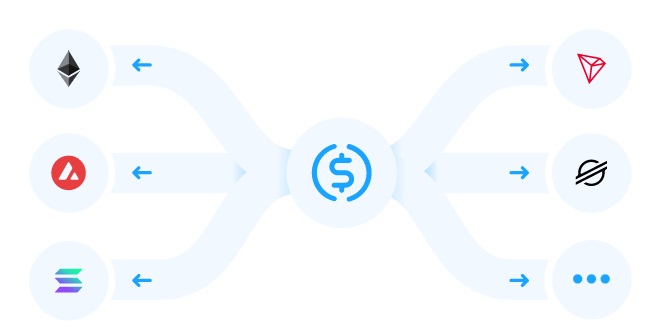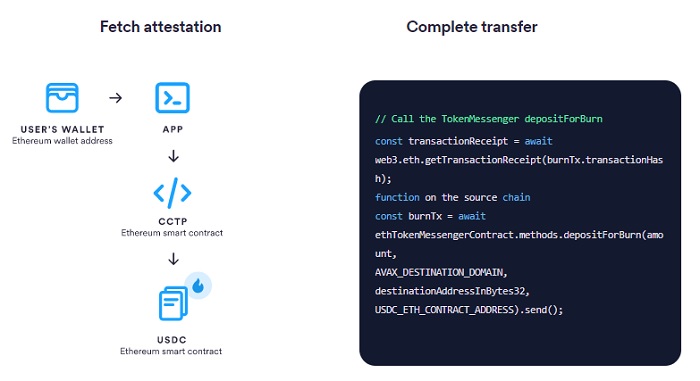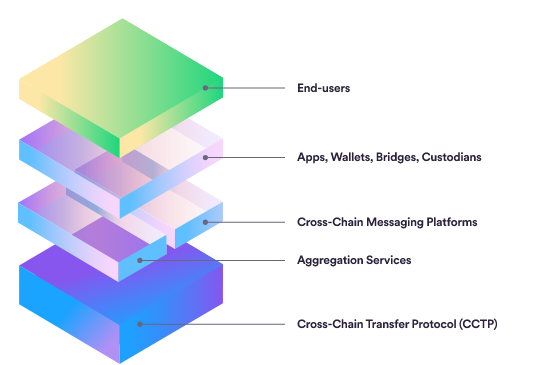An article to understand the cross-chain transmission protocol CCTP launched by Circle
This article comes fromBlockworks Research & Circle, the original author: chain researcher @purplepil l3 m
Odaily Translator |

Odaily Translator |
On April 26, Circle, the issuer of USD stable currency USDC, announced the launch of the USDC Cross-Chain Transfer Protocol (CCTP) between Ethereum and Avalanche. Mint new tokens. Circle said that many cross-chain projects including Celer, Hyperlane, LayerZero, LI.FI, MetaMask, and Wormhole will use the protocol in the future.
CCTP (Cross-Chain Transfer Protocol) is a permission-free on-chain tool launched by Circle that facilitates USDC transfers between different blockchains. Circle does not need liquidity on the target chain, but burns USDC on the source chain and mints native USDC on the target chain, and then enables USDC to flow locally across blockchains, making the liquidity in Web3 more unified and simplifying users experience.
secondary title
How does CCTP work?
First, the user needs to initiate a USDC transfer through any integrated portal on the source chain, and specify the receiving wallet address on the target chain. The portal/wallet/bridge (dApp) will destroy USDC on the source chain, and then Circle will prove the destruction on the source chain event.
Finally, the dApp uses the proof to mint USDC on the target chain and sends it to the recipient. As of April 27th, Metamask, 5 bridges, and 10 different partner SDKs such as Layer Zero and Wormhole have integrated with CCTP.

secondary title
CCTP acts as a permissionless infrastructure for developers to build on top of or integrate into their existing applications, wallets and bridges.
secondary title
No, CCTP is a license-free on-chain utility for third-party developers.
secondary title
CCTP is now available on the mainnet of Ethereum and Avalanche. Expansion to more chains is expected this year. Developers can visit Circle's developer documentation to get started building on CCTP.
secondary title
Can users use Circle Account or Core API to move USDC across chains? Can centralized exchanges work?
Circle Account and Core API are able to move USDC across chains natively, but these commercial products are only available to qualified businesses approved by Circle.
In contrast, CCTP is license-free, which means any third-party developer can access it to integrate into their applications and does not require account registration. Users can move USDC to any supported blockchain at any time through a CCTP-enabled app. Developers can also build new on-chain experiences based on CCTP in their applications.

secondary title
CCTP does not require centralized USDC liquidity to perform cross-chain transfers, improving capital efficiency and avoiding fees charged by liquidity providers.
secondary title
All burns of USDC emit an event transaction on the source chain, which is automatically observed by Circle's attestation service, and the application initiating the USDC burn is responsible for obtaining a signed attestation from Circle, which then enables CCTP to mint USDC on the target chain.
secondary title
The Circle CCTP smart contract has passed third-party audits performed by ChainSecurity and Halborn.
secondary title
While Circle's attestation service unavailability will temporarily prevent new burn messages from being signed, uptime and availability are expected to be similar to how existing minting services operate.
secondary title
Won't.
secondary title
CCTP has no direct impact on the existing bridge version of USDC.
secondary title
How does CCTP influence Circle to launch USDC on more blockchains?



